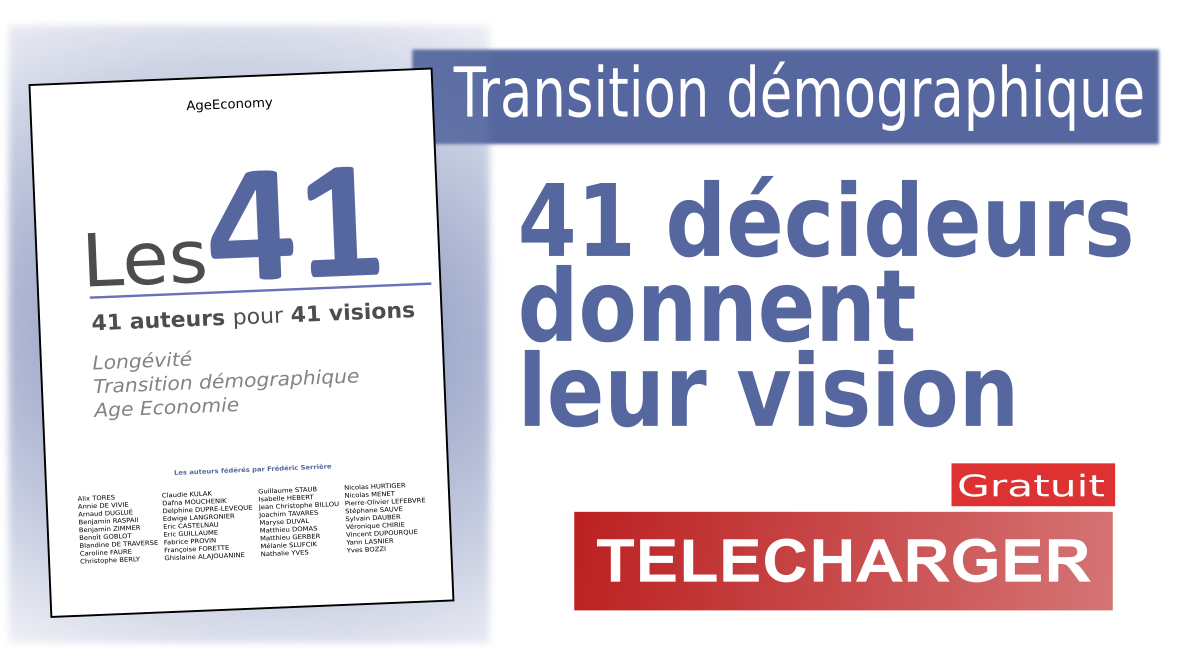Many fortunes have been made by following the « baby boomer » generation – the post-war avalanche of Americans born between 1946 and 1964 – as it matures. After all, it was this 76 million-strong segment that bought hula hoops and Frisbees in the 1950s, crowded colleges in the 1960s and sent the price of housing soaring in the 1970s and 1980s. And now, as the year 2000 approaches and the oldest baby boomers hit 50, companies across the country are faced with a massive demographic shift forced by the relentless march of time.
;
To quantify this new reality, the number of adults 35 years old or less will decline a total of 8.3 million between 1990 and 2000, while the number of adults older than 50 will grow by 12.2 million. Fully one-third of the U.S. population will be age 50 or older by 2010, up from one-quarter in 1991, presenting abundant opportunities for alert businesses in every sector that can successfully meet the needs, tastes and concerns of this influential and affluent niche.
;
According to Rick Adler, founder of The Senior Network, a marketing and research company geared to older consumers: « Simply based on population growth trends, if a product is marketed to the 50-plus audience and maintains its market share, it should increase in sales by 35 to 50 percent in the next 20 years.
;
Conversely, a brand targeted at the zero to 50 age groups will be flat in sales. »
;
« Middle age is where the action is for the next 15 years, » confirms Ken Dychtwald Ph.D., chairman and chief executive officer of Age Wave, Inc., a marketing services company focused exclusively on the maturing market. Not only are 76 million baby boomers beginning to move into their 50s, but they have money to spend. According to an Age Wave analysis, by the year 2000, heads of households ages 45-54 will increase their annual expenditures by 36 percent. At the same time, the 65-plus population will probably be close to 40 or 45 million in size.
;
However, as the mechanics of the aging population pick up steam, « there is a huge peril at viewing this segment as one gray mass, » Adler cautions, « and not recognizing the diverse habits of 50-plus consumers. » People in their 50s could have young children or grandchildren, for example. They may be in their prime earning years, or have interrupted a career to go back to school or start a business. And they are as likely to be dating as their younger counterparts, perhaps for the first time in decades. As Dychtwald points out, « the traditional linear plan, from birth through adolescence and marriage to death » is no longer accurate.
;
At the same time, as boomers begin turning 50, there’s no indication that they’ll expect or accept physical deterioration. This is, after all, the generation of aerobic exercise and « natural » foods þ a term that will continue to carry weight for this consumer bloc as it matures. « They’re not going to sink gracefully into fat old age. They’ve worked all their lives to improve their appearance, » says an executive with the research firm of Yankelovich Clancy Shulman in New York City.
;
What this means is that companies desirous of courting the growing 50-plus audience must not define it by age or income alone, but instead should segment this diverse market based on a combination of physical, social and psychological factors.
;
Opportunity Abounds
;
Many companies have already been taking steps to maximize this new 50-plus demographic reality. A luxury automaker uses a satirical Janis Joplin rock song from the rebellious 1960s in a television commercial. ; McDonald’s develops a hamburger targeted to adult tastes with a multimillion dollar marketing campaign to match. And the man who developed Clearasil to help the baby boomers navigate through their teenage years has acquired Grecian Formula hair coloring, repositioned it toward men, and started selling it in drugstores.
;
There is definitely money to be made by paying attention to the needs and concerns of the various segments of the 50-plus audience. Although it is erroneous to assume that baby boomers are homogeneous in their buying patterns, common sense suggests that offering products or services aligned with some basic marketing principles will go a long way to attracting this complex segment:
;
– ; Make sure what you offer is perceived as good value for the money. As baby boomers get older, they are making sure that what they buy is priced reasonably. And the existing retired population is faced with getting the most from their fixed incomes. Witness the recent growth in discount stores such as Ross Dress for Less, Home Depot and Wal-Mart.
;
– ; Products should be well designed with broad applicability. « The key to success, » claims industrial designer Jim Mueller, « is to produce products flexible enough to be useful for older people and those with disabilities as well as the general population, resulting in products with wide appeal. »
;
– ; Don’t assume that 50-plus customers are recalcitrant and brand loyal. According to Rick Adler, « All the studies indicate that mature consumers are as likely, if not more likely, to switch for value. »
;
– ; Get 50-plus consumers involved in your sales and marketing. Have them sell, do customer service, and provide insights on how best to appeal to this diverse group. Keep in mind that the generation that said « don’t trust anyone over 30 » is now saying « don’t trust anyone under 30 » and may very well soon be saying « don’t trust anyone under 50. »
;
It’s Not Just What You Sell, It’s How You Present It
;
No matter what you are selling, keep the following guidelines in mind when communicating with the 50-plus market :
;
; Sell experience, not age. Talk about experiences, not getting older, to attract this audience of individuals who are used to getting what they want and are not interested in growing old gracefully. If your ad touts your product as being ; ; ;specifically designed for older people, it will probably not be well-received. Instead, emphasize that the people who will most benefit from your product are those with « experience
;
* ; Choose your words carefully. Don’t address the 50-plus group by calling it « older » or « senior; » the words « mature » or « prime » are viewed in a much more positive light. Inspire people to buy, rather than trying to scare them into doing so. For example, smart insurance marketers position themselves as selling investments, not just protecting loved ones in case of the death of the main provider.
;
* ; Use positive role models. « Seniors already know what’s wrong with them and don’t appreciate being reminded of their limitations, » according to Frank Conaway, president of Primelife, a marketing consultancy specializing in the senior market. At the same time, as baby boomers age, they are not buying into the old stereotypes. They want to enjoy their mature years, and live actively and positively while dealing with the challenges of growing older. For this reason, using healthy, active, age-appropriate role models in advertising will help attract both seniors and baby boomers.
;
* ; Pay attention to the needs of aging customers. Make certain your signs, packaging, marketing materials and nametags are easy to read. Select larger type sizes (12 to 13 points) and simpler type styles, and avoid all uppercase lettering. Make good use of « white » space; copy that is too dense is harder to read. Avoid using subtle color combinations — the strongest color contrast is the easiest to see, and that’s black and white.
;
Have your place of business well lighted, inside and out, and keep it adequately heated, with background music toned down. Watch out for shiny surfaces, and minimize outside glare as much as possible. And, if space permits, place a couple of chairs in strategic locations so customers can sit down and rest.
;
* ; Communicating with the mature niche. Make sure your employees keep in mind the following strategies :
;
; ; – Be prepared to spend more time with this segment, and don’t rush or pressure them, as mature customers are more inclined to put a priority on the atmosphere of the business establishment and the relationships formed there.
;
; ; – Unless you know your older customers well, show respect by addressing them as Mr. or Mrs., not by their first names.
;
; ; – If a younger person accompanies an older customer, don’t ;converse with the younger person as if the older customer is not there or is not capable of understanding what you’re saying. Above all, do not refer to the older customer in the third person as in « what kind of sandwich would your mother ; ; ; ; ;like? »
;
* ; Choose your media carefully. When targeting any specific market, choose media that reach this audience. The challenge with the 50-plus segment is finding media that speaks to distinctions in lifestyle, stage in life and health status, as opposed to age ranges alone. And don’t ignore the Internet.
Despite being a new medium marked by constant change and a certain degree of chaos, experts agree that the Internet is here to stay, and the familiarity of baby boomers with computers makes it an increasingly plausible marketing tool.
;
At each stage of their lives, the needs and desires of the baby boomer generation — likened by demographers to « a pig moving through a python » — have become the predominant concerns of both American business and popular culture. As the nation’s dominant age group begins turning 50, companies that understand of the vast implications of this demographic shift and prepare for the new needs of a maturing population are destined to profit. ;



![Innovations pour les Seniors [ les facteurs clés de succès ]](https://www.marchedesseniors.com/wp-content/uploads/2022/01/vignette-700.png)